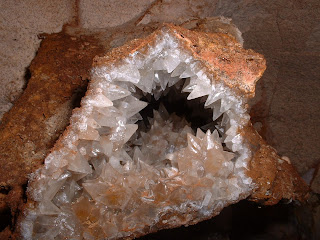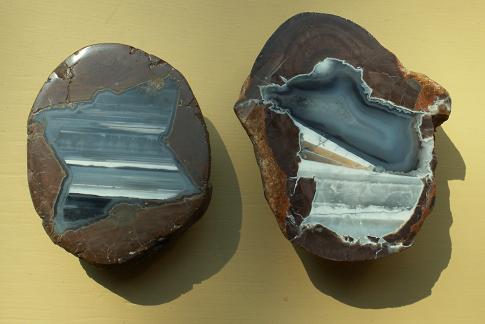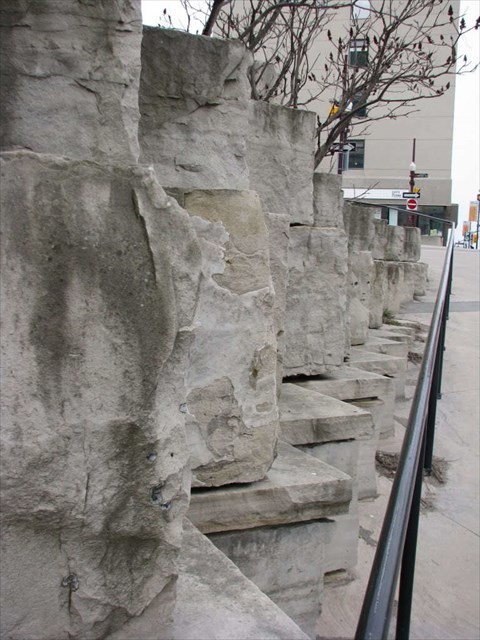A Local Cavity
Welcome to a little public friendly Earthcache in the Heart of Peterborough's Douwntown Core. For this Earthcache you only need to remain on the sidewalk as outlined in the below image. Please be delicate with this Earthcache. Look, inspect and identify what you need but please resist the temptation to touch, rub or pull.
"Cavity, Vug, Geode, or Nodule; Which is which?"
First, note that our case always relates back to North America. More specifically, Ontario Canada where Geodes are seldom due to the sedimentary Limestone geology vs. volcanic areas contaning igneous rocks such as the American Mid-west. Another Earthcache by us in the near future will discuss Geodes properly.
"So you’re asking yourself, what the is difference between a cavity, a vug, a geode, or a nodule? Well here comes a crash course education lesson.
- A cavity is defined as any open space in rock. It does not matter what is in it. ALL open spaces in rocks are cavities.
- What’s a vug? A vug is a cavity but one that has crystals growing inside of it. If there’s no crystal, then it can’t be called a vug. It HAS to be crystallized in order for it to be called a vug. All vugs are cavities but not all cavities are vugs.

- What’s a geode? A geode is special type of vug which is first lined with a layer of the Chalcedony variation of quartz (commonly known as Agate). Then, the crystals grow on top of the Chalcedony but they MAY OR MAY NOT be recognizable. Point is, if there is no Chalcedony, then it can never be a geode.Geodes are noted as being subspherical shape, usually outside, disconnected or removed from bedrock.

- And last but not least, what’s a nodule? A nodule is a cavity that is completely filled with Chalcedony. There may be crystals that are not recognizable. A common example is a Thunder Egg."

-
Frequently, Quartz or reminants of Quartz are found as the prominant crystal inside vugs, geodes and nodules.
So, What's Quartz? Quartz is the most common mineral found on the surface of the Earth. A significant component of many igneous, metamorphic and sedimentary rocks, this natural form of silicon dioxide is found in an impressive range of varieties and colours.
Now that you're grasping the concepts, head out and discover this unique hidden gem! Happy Caching.

To Log This Earthcache, Please email us with the answers to the following questions:
1- Include with your log, a photo that clearly demonstrates that you visited this Earthcache. You do not have to be in the photo as per policies. However, including a picture of the area, although optional, is the best way to display your visit. Please do not post spoiler pictures.
2- Using an ultraviolet light or blacklight, beam the light into the cavity. Does this crystal reflect or illuminate light? Is the crystal clear or cloudy? What is the original color of the present Quartz?
3- Based from the above educational lesson, what is found at GZ? A vug, geode or nodule? Hint: Is there any Chalcedony present?
4- Using a pen, stick, ruler or battery (or whatever else you can come up with to use as an accurate measuring device), estimate the size of the cavity at the rock slab closest to GZ. What is the length and the width of the present geological wonder?


Reference Material:
http://edcjunkie.com/articles/cavityvuggeodenodule.pdf
Miller Hall Museum of Geology - Queen's Unviersity, Kingston - Ontario, Canada